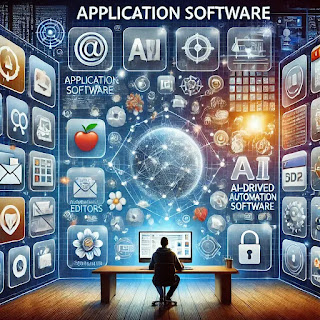The History & Future of Computers
Computers have transformed the way we live, work, and communicate. From their humble beginnings as mechanical calculating devices to the powerful, AI-driven machines of today, computers have evolved rapidly. This blog post explores the history of computers, their impact on society, and what the future holds for computing technology.
The History of Computers
Early Mechanical Computers
The origins of computing can be traced back to mechanical devices designed to aid in mathematical calculations:
Abacus (circa 2400 BCE): One of the earliest tools used for arithmetic operations.
Pascaline (1642): Blaise Pascal invented this mechanical calculator capable of addition and subtraction.
Difference Engine (1822): Charles Babbage designed this early mechanical computer to compute polynomial functions, laying the groundwork for modern computing.
The First Electronic Computers
The transition from mechanical to electronic computing began in the early 20th century:
Alan Turing (1936): Introduced the concept of the "Turing Machine," which became the foundation for modern computing logic.
ENIAC (1945): The first general-purpose electronic computer, capable of performing complex calculations at unprecedented speeds.
UNIVAC (1951): The first commercially available computer, used for business applications.
The Evolution of Personal Computing
Computing shifted from large, room-sized machines to personal computers:
1970s: The introduction of microprocessors led to the development of personal computers like the Apple I (1976) and the IBM PC (1981).
1980s-1990s: Graphical user interfaces (GUIs) became popular with systems like Windows and Mac OS, making computers more user-friendly.
2000s: The rise of mobile computing, laptops, and internet connectivity revolutionized how we access and share information.
The Present: AI, Cloud Computing, and Quantum Computing
Today, computers are more powerful than ever, integrating advanced technologies such as:
Artificial Intelligence (AI): Machine learning and AI-driven applications are transforming industries like healthcare, finance, and entertainment.
Cloud Computing: Remote data storage and processing allow for seamless access to information from anywhere in the world.
Quantum Computing: Unlike traditional binary-based computers, quantum computers use qubits to perform complex calculations at speeds unimaginable with classical computers.
The Future of Computers
Looking ahead, computers will continue to evolve, shaping the future in unimaginable ways:
Neuromorphic Computing: Mimicking the human brain to process information efficiently, leading to advancements in AI and robotics.
Brain-Computer Interfaces (BCIs): Direct communication between the brain and computers, opening possibilities for enhanced cognition and medical applications.
Quantum Supremacy: As quantum computing matures, breakthroughs in drug discovery, climate modeling, and cryptography will become reality.
Holographic and Augmented Reality Computing: Future computers may project holographic interfaces, making interactions more immersive and intuitive.
From the early abacus to the cutting-edge AI of today, computers have come a long way. As technology advances, the future of computing promises even more groundbreaking innovations that will redefine how we interact with the world. Whether through AI, quantum mechanics, or brain interfaces, the next generation of computers will unlock limitless possibilities, shaping the future in ways we can only imagine.
What are your thoughts on the future of computers? Let us know in the comments below!
References
Ceruzzi, P. E. (2012). Computing: A Concise History. MIT Press.
Isaacson, W. (2014). The Innovators: How a Group of Hackers, Geniuses, and Geeks Created the Digital Revolution. Simon & Schuster.
Bellis, M. (2023). The History of Computers: A Brief Timeline. Retrieved from https://www.thoughtco.com
Gordon, J. (2023). Future Trends in Computing Technology. Retrieved from https://www.techradar.com
Kurzweil, R. (2005). The Singularity Is Near: When Humans Transcend Biology. Viking Press.
Turing, A. M. (1936). On Computable Numbers, with an Application to the Entscheidungsproblem. Proceedings of the London Mathematical Society.


Comments
Post a Comment